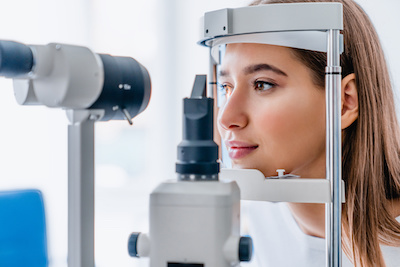Many cell cultures used in laboratory experiments are, for all intents and purposes, human cancer cells.
One of the basic characteristics of a cancerous cell is that it continually divides. Unlike normal cells, cancer cells do not have a mechanism inside their DNA that tells them when to stop dividing. As such, they continue to grow if given the proper conditions. This makes them excellent for research; because the cells multiply quickly, they can be very useful in a laboratory setting.
Some of the cells used by Dr. Wentz in his cell culture studies were likely HeLa cells. HeLa cells survive and multiply very well in culture, so they are used in research labs around the world for study. In fact, if HeLa cells are cultivated properly and given optimum nutrients, they continue to grow and divide indefinitely.
USANA is not the only company which uses these cell lines for research. In fact, these cell lines can be ordered from many catalogues. Over the past 52 years, research on HeLa cells has provided scientists with an enormous amount of knowledge about the physiology and genetics of cells.
Much of the research performed by Dr. Wentz and his laboratories (Gull Labs and USANA) is privately funded and has not been published. Below are a few abstracts from published studies conducted by Dr. Wentz and other USANA scientists. All other USANA clinical research can be found at: https://askthescientists.com/qa/usana-clinical-research/
Preobrazhensky S, Malugin A, Wentz M. Flow cytometric assay for evaluation of the effects of cell density on cytotoxicity and induction of apoptosis. Cytometry. 2001;43(3):199-203.
BACKGROUND: We used a flow cytometric assay, which allows us to perform precise measurements within a wide range of cell concentrations to study the effect of the density of cultured cells on their sensitivity to cytotoxic compounds. METHODS: To measure cytotoxic action, cells are plated in a 96-well plate at a density ranging from 700 to 100,000 cells/ml and are allowed to grow for 72 h in the presence of various concentrations of a cytotoxic agent. To quantitate the number of surviving cells, each sample is analyzed in a flow cytometer with equal acquisition time. Viable cells are identified by light scattering characteristics identical to those for untreated cells. To estimate the amount of viable, apoptotic, or necrotic (late apoptotic) cells, the samples are stained with Annexin V and propidium iodide. RESULTS: Using this method, we found that the cytotoxicity of ascorbic acid for malignant lymphoid CEM-C7 cells can be increased significantly when cell density decreases, reaching a value that is typically lower than the normal physiological concentration of ascorbic acid in blood. CONCLUSION: The flow cytometric analysis described in this study can be useful in comparing the effects of cell density on the cytotoxic action of various compounds.
Preobrazhensky S, Trakht I, Chestkov V, Wentz M. Monoclonal antibody-based immunoassay for evaluation of lipoprotein oxidation. Anal Biochem. 1995;227(1):225-34.
Numerous reports indicate that the oxidation of low-density lipoprotein (LDL) can significantly change its metabolic and physiological properties. Most methods for evaluation of LDL oxidation require isolation of lipoprotein, making the procedure laborious and increasing the probability of artifactual modification of LDL. In this paper we describe an immunochemical approach which can be used to measure the oxidation of isolated LDL and apoprotein B in unfractionated serum and to evaluate the effects of antioxidants on these processes. The procedure is based on differential recognition by monoclonal antibodies of native and oxidized lipoproteins. The results obtained with our assay indicate a strong correlation between the changes of apo B epitope expression during oxidation and the formation of conjugated dienes, changes in lipoprotein electrophoretic mobility, and interaction with fibroblast and macrophage receptors. The sensitivity of apo B to oxidation varies greatly among serum samples obtained from individual donors. These differences do not correlate with the differences in sensitivity to oxidation of LDL isolated from the blood samples of the same donors. It is also shown that apo B oxidation in serum can be progressively inhibited in the presence of increasing amounts of various antioxidants.
Mazumder P, Chuang HY, Wentz MW, Wiedbrauk DL. Latex agglutination test for detection of antibodies to Toxoplasma gondii. J Clin Microbiol. 1988;26(11):2444-6.
A resurgence of interest in Toxoplasma gondii has occurred because this coccidian parasite causes lethal infections in immunologically compromised hosts and is responsible for at least 3,000 congenitally infected infants in the United States annually. Thus, rapid, specific, and inexpensive serologic tests are required for routine screening of patients, especially pregnant women. We have developed a latex agglutination test for antibodies to T. gondii which utilizes covalently coupled T. gondii antigens. When compared with an indirect immunofluorescence assay, the latex test had a sensitivity of 94% and specificity of 100%. Compared with an enzyme-linked immunosorbent assay, the latex test had 86% sensitivity and 100% specificity. When testing samples which exhibited nonspecific polar staining by the immunofluorescence assay, the enzyme-linked immunosorbent assay had a 50% false-positive rate, whereas the latex agglutination test yielded no false-positive results. Thus, the latex agglutination test provided an efficacious method for routine serological screening for antibodies to T. gondii.
Due to company policy, we cannot disclose the names or locations of raw material suppliers. However, USANA scientists conduct numerous tests on both raw materials and finished products to ensure purity and safety.
Among other testing, we use HPLC, ICP-MS, FTIR and GLC for quality control purposes. We perform multiple testing and screening procedures to assure that our raw materials are not only pure, but also that they contain no unintentional compounds (pesticides, heavy metals, organic contaminants, manufacturing contaminants, etc).
Regardless of their source, all raw ingredients that go into USANA products are selected for effectiveness, purity, and safety. We use vitamin and mineral compounds in the chemical forms, whether “natural” or “synthetic”, that are best absorbed and utilized by the body, and we purchase the materials with the highest standards for quality.
In general, testimonials are considered unreliable as scientific evidence and are not a worthy substitute for scientific validity. There are currently hundreds of randomized, double-blind placebo-controlled studies that indicate a strong correlation between diets rich in antioxidants from fruits and vegetables and a decreased incidence of chronic degenerative disease. This significance continues to be investigated through carefully validated scientific research.
USANA continually reviews recent scientific literature and incorporates its findings, along with in-house laboratory research and clinical studies, into product development and design. This comprehensive approach to product development provides our Associates and Preferred Customers with comprehensive, balanced, safe, and effective nutritional formulas.
Products spoil when they become contaminated during manufacturing, packaging, or customer use, and the product is unable to slow or stop the spread of microorganisms. Preservatives were added to products in the late 1950s when it was discovered that skin care products spoiled and the resulting bacteria (such as Pseudomonas aeruginosa) were dangerous. In some cases, use of spoiled products resulted in conditions as severe as blindness.
The law now requires all skin care products to be adequately preserved.
Parabens, or esters of para-hydroxybenzoic acid, have been used as food and cosmetic preservation since the 1950s. Some are found in very low levels in nature. Generally, more than one paraben is used in a commerical product to assure broader biocidal and biostatic coverage than would be afforded by a single paraben.
There is some evidence that parabens may cause skin irritation and contact sensitization in certain individuals. USANA scientists have the technology to make a self-preserving product, making the use of parabens no longer necessary.
USANA is aware of a published study that showed some accumulation of parabens in breast cancer tissue. However, this study was not exhaustive and did not provide enough evidence to conclude that cancer was caused by parabens; therefore, we do not recommend that Associates use this study for marketing purposes. We are encouraged that additional studies are planned, and we hope they will bring clarity to these initial findings.
Your genetics, lifestyle, and diet all play an important role in the long-term health of your eyes and vision. Since your diet is almost wholly under your control, the following highlights important dietary choices you can make throughout life to support eye health. You’ll also read about the research behind those nutrition and vision recommendations, and several other steps you can take to optimize your vision.
Eating the Right Nutrients for Eye Health
Your diet, and the nutrients in it, impacts almost every aspect of your health. Your eye health can be supported by an overall healthy diet. However, there are several specific vitamins, minerals, and antioxidants that play a more important role in optimizing vision.
Vitamin C
Vitamin C can be found in virtually every cell in the body. It supports healthy capillaries, gums, teeth, and cartilage. But the essential vitamin’s concentration is significantly higher in the retina than in the blood. That’s because vitamin C helps maintain optimal performance by protecting your eyes from free radical damage.
Since the human body does not make vitamin C, it must be consumed as part of the diet. Some of the best sources of vitamin C are citrus fruits, peppers, broccoli, and kale.
Vitamin E
Like vitamin C, this essential nutrient is also an important antioxidant in the eye that helps neutralize free radicals. If left alone, over time free radicals can break down healthy tissue and impair long-term eye health.
Vitamin E deficiency is fairly common, since some of the best sources aren’t foods that people eat a lot of. To increase the vitamin E in your diet, try eating more sunflower seeds and oil, almonds, hazelnuts, peanuts, avocados, and spinach.
Zinc
This trace mineral is found in high concentrations in the eye. It plays a critical role in transporting vitamin A—another nutrient that supports eye health—to the retina. Zinc has been linked to preserving normal night vision. Dietary sources of zinc include oysters, red meat, shellfish, beans, and nuts.
Lutein & Zeaxanthin
These two powerful carotenoids both act as antioxidants. They serve as a built-in sunscreen for the eyes, where the nutrients help support blue light filtration. They also support healthy visual acuity (how clearly each eye can see).
Lutein and zeaxanthin are concentrated in your retina. The amount found there is directly proportional to your dietary intake of these carotenoids. To increase your consumption of lutein and zeaxanthin, try eating more dark green vegetables—like spinach, kale, swiss chard, broccoli, and parsley.
Omega-3 Fatty Acids
Fats are an essential part of the human diet. Most individuals eat enough of the essential omega-6 fatty acids; however low intakes of omega-3 fatty acids are common, particularly Docosahexaenoic acid (DHA) and Eicosapentaenoic acid (EPA).
Omega-3 fatty acids support the eye’s oily outer layer. DHA, in particular, is found in high concentrations in the retina. It is important in the visual development of new-born infants. Studies have also shown adequate levels of DHA can support optimal vision and help maintain retinal health.
Fatty fish, like salmon, herring, sardines, mackerel, and trout, are the best sources of EPA and DHA. Plant sources of EPA and DHA are harder to find, but the omega-3 fatty acid alpha-linolenic acid (ALA) is found in flaxseed, chia seeds, walnuts, and soybeans.
An Overview of the Research on Nutrition and Vision
Over the past three decades, there have been significant advances in research related to nutrition and eye health. Researchers now have a better understanding of how nutrition and vision are connected, and how nutrients support eye health, while helping maintain optimal vision as you age. The research studies highlighted below provide a basis for some of the previous nutrient recommendations.
Age-Related Eye Study
The Age-Related Eye Study (AREDS), was a major clinical trial that was sponsored by the National Eye Institute in the United States. The goal of the study was to take an in-depth look at the connections between dietary intake of several select nutrients and long-term eye health.
The study began recruitment in 1992, and involved 3640 subjects, ages 55-80. The subjects in the AREDS formula group were administered daily doses of:
- 500 mg vitamin C
- 400 IU vitamin E (180 mg dl-alpha-tocopheryl acetate)
- 15 mg beta-carotene (7,500 RAE)
- 80 mg zinc
- 2 mg copper (to avoid zinc-related copper deficiency)
Compared to placebo, supplementation with the AREDS formula had a measurable impact on supporting healthy eye aging, including support for visual acuity.
Age-Related Eye Study 2
AREDS2 data was first published in 2013 and tested several variations of the original AREDS formula. The primary goal was to test if adding lutein and zeaxanthin or omega-3 fatty acids would make the original AREDS formula more effective. One formula also tested a significantly reduced zinc level (25 mg vs 80 mg).
Study results show that adding lutein and zeaxanthin, or omega-3 fatty acids offered no additional eye health benefits over the original AREDS formula. However, using lutein and zeaxanthin in place of beta-carotene had a small benefit over the AREDS formula. The reduced zinc level was just as effective as the high zinc formula.
Based on the results of the AREDS2 study, it would make sense to use lutein and zeaxanthin in place of beta-carotene, limit zinc dosage to a safer level, and maintain the same levels of vitamin C, vitamin E, and copper.
An AREDS2-based formula might contain:
- 500 mg vitamin C
- 400 IU vitamin E
- 10 mg lutein
- 2 mg zeaxanthin
- 25 mg zinc
- 2 mg copper
Lutein Antioxidant Supplement Trial
Another landmark study was the Lutein Antioxidant Supplement Trial (LAST). It was a 12-month, placebo-controlled trial. The study tested both a purified lutein supplement, and a supplement with a mix of lutein and other antioxidants such as vitamin A, vitamin C, vitamin E, and beta carotene.
Both supplement groups had increased pigment density in the retina. Tests showed the supplements helped support visual acuity and glare recovery. The placebo group had no significant changes in these measured criteria.
Macular Pigment and Visual Performance Under Glare Conditions
A study on 40 healthy subjects assigned them to receive daily supplements of lutein (10 mg) and zeaxanthin (2 mg) for six months. The subjects’ eyes were tested for the effects of glare as experienced in everyday situations. This included being outdoors on bright days, lengthy sessions looking at a computer monitor, and nighttime exposure to oncoming headlights.
Following six months of supplementation, the participant’s average macular pigment optical density (MPOD) increased compared to the beginning of the study. Higher MPOD has been linked to optimal visual acuity.
After testing the subjects for their performance, researchers concluded that four to six months of supplementation with lutein and zeaxanthin supported healthy visual performance in high glare situations.
Nurses’ Health Study
The Nurses’ Health Study and the Health Professionals Follow-up Study involved more than 100,000 participants. All participants were aged 50 years or older and were free of targeted health concerns at baseline.
The researcher’s analyzed carotenoid intake based on dietary food frequency questionnaires at baseline and follow-up. Then they calculated predicted plasma carotenoid scores. The results of this study found that higher plasma lutein and zeaxanthin levels had a protective effect on the eye and helped support healthy eye aging.
Additional Tips to Protect Your Vision
Schedule an Eye Exam
When it comes to supporting your future eye health, it’s important to know where you stand now. An eye exam will measure visual acuity, but it can do so much more. With a comprehensive eye exam, it’s possible to detect future eye and vision problems long before they start showing more obvious symptoms.
Beyond an initial eye exam, it’s recommended that some individuals have follow-up exams more frequently too. The National Eye Institute recommends an eye exam every one to two years for:
- Everyone over age 60
- African Americans over age 40
- Specific medical conditions that may impact eye health
Wear Eye Protection
Just how you wear sunscreen to protect your skin from the sun, wearing sunglasses can help protect your eyes from harsh rays. Short-term, too much time in the sun can result in photokeratitis (sunburn of the eye). Enough UV exposure over time may lead to long-term eye damage.
Wearing sunglasses that block 99 to 100 percent of UVA and UVB radiation can help protect your eyes from short- and long-term damage from the sun. Contact lenses that are designed to block UV radiation are another solution. A brimmed hat will even provide additional protection for long days in the sun.
In addition to shielding your eyes against the sun’s UV radiation, it’s important to protect your eyes in dangerous situations. Appropriate eye protection should be worn during sports, construction, yard work, and any other time foreign objects may threaten your eyes.
Stay Active and Maintain a Healthy Weight
Staying physically active and maintain a healthy weight support optimal eye health. You can find some recommendations on how to maintain a healthy weight here.
If You Smoke, Quit Now
Smoking is dangerous for the whole body, including the eyes. Studies show smoking can harm the optic nerve and increase your risk for other eye health and vision problems.
Milk calcium is calcium and other minerals derived from milk. There is small amount of milk protein in milk calcium. Although the protein dosage is small, this could potentially be a problem for children allergic to whey protein.
Melatonin is a naturally occurring hormone. In humans, melatonin is produced in several tissues, including the brain (pineal gland), retina, and GI tract. In the brain, melatonin synthesis is stimulated by darkness. Once synthesized, it enters the blood stream and acts as an endocrine hormone involved in sleep regulation and a number of other cyclical physiological functions. Daily biological rhythms thought to be influenced by melatonin include activity and sleep, core body temperature, immune function, antioxidant defenses, blood pressure, feeding, and glucose regulation.
Please note that melatonin supplements are not sleeping pills. Oral melatonin supplements support the human body’s natural circadian rhythms and promote healthy sleep. When taken an hour before bedtime, melatonin supports the natural rise in melatonin that typically occurs before sleep.
While most published research has been done using glucosamine sulfate, the studies using glucosamine HCl have yielded similar results. In addition, commercially available glucosamine sulfate is glucosamine HCl with 2KCl (potassium sulfate) added to the mixture. So, in the event that the sulfate moeity has anything to do with the benefit (which it has not in studies up to this point), Procosa also contains potassium and magnesium sulfate.
A study (Setnikar et.al.), referencing the bioavailability of glucosamine, states that after oral administration, glucosamine sulfate is rapidly split into glucosamine and sulfate ions and absorbed. After absorption, the sulfate ions enter the blood stream where a steady level already exists. None of the clinical studies performed with glucosamine sulfate indicate that sulfate contributed to the benefits shown in the study. As a matter of clarification, while this study references glucosamine sulfate, it was actually glucosamine hydrochloride that was radiolabeled and used to prove the bioavailability of glucosamine. We can conclude that since sulfate and hydrochloride are not the key building blocks for the production of joint cartilage, it makes no difference whether glucosamine has a sulfate or hydrochloride carrier, in terms of bioavailability.
There is no evidence to suggest that glucosamine sulfate offers advantages over glucosamine hydrochloride. There is no need for glucosamine hydrochloride to be stabilized with salt. Hydrochloride offers a more concentrated form of glucosamine. In fact, there is slight more elemental glucosamine in the current 3 tablet formulation than there was in the previous 4 tablet version. Other significant benefits of the current formula are the reduction in the number of tablets (the curcumin complex in the formula is as much as 30 times more bioavailable than the previous one, so the dosage is much lower), and the fact that it is now vegetarian. That fact alone will now enable vegetarians and people with shellfish allergies the opportunity to use our formula.
References
Houpt JB, McMillan R, Paget-Dellio D, Russel A, Gahunia HK Effect of treatment of glucosamine hydrochloride in the treatment of pain in osteoarthritic of the knee. J Rheumatology 1998; 25 (supplemement 52): 8.
Noack W, Fischer M, Forster KK, Rovati LC, Setnikar I. Glucosamine sulfate in osteoarthritis of the knee. Osteoarthritis Cart 1994; 2:51-9.
Muller-Fabbender H, Bach GL, Haase W, Rovati LC, Setnikar I. Glucosamine sulfate compared to ibuprofen in osteoarthritis of the knee. Osteoarthritis Cart 1994; 2:61-9.
Setnikar L, Palumbo R, Canali S, Zanolo G. Pharmacokinetics of glucosmine in man. Arzneimittelforschung 1993;43:1109-13.
Thanks for sharing! Entering your USANA ID number creates a unique URL, which allows you to receive credit on referrals.
Here’s how it works: When the link is clicked, a cookie (if allowed) is created. Shopping buttons on applicable product pages will appear to the referred user. A click on these buttons passes your referral information to USANA’s Shopping Cart, tying purchases made on cookie-containing devices to you for 30 days. In addition, if a person clicks on this unique URL and then later visits USANA.com and makes a purchase (within 30 days), you receive credit for the sale.
Enter your ID now for these enhanced features.








